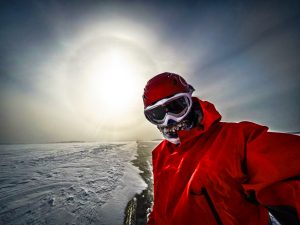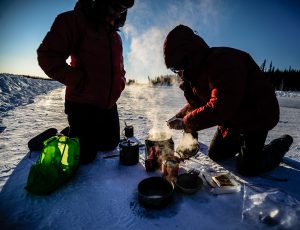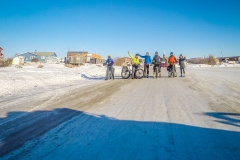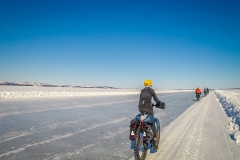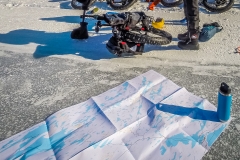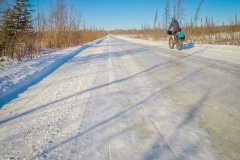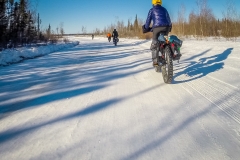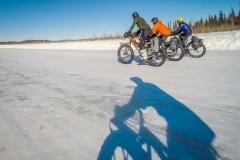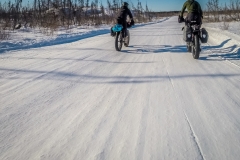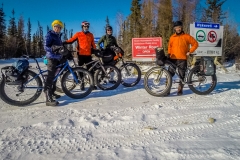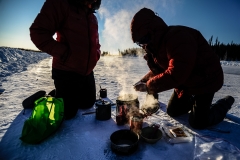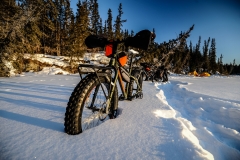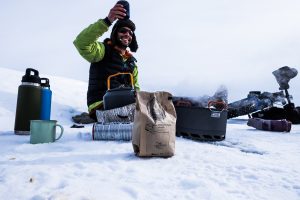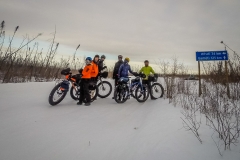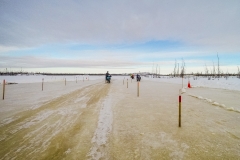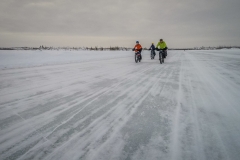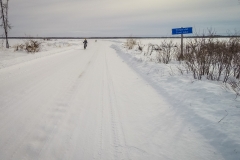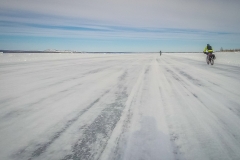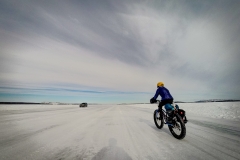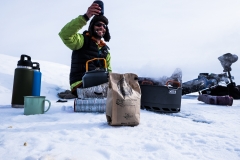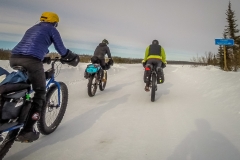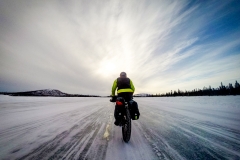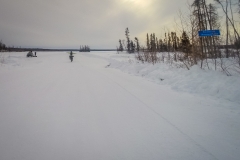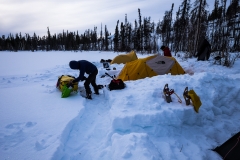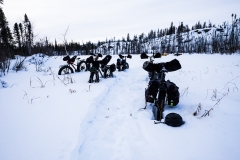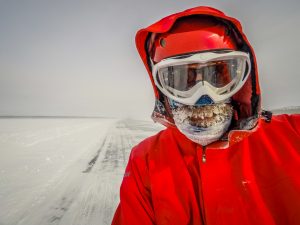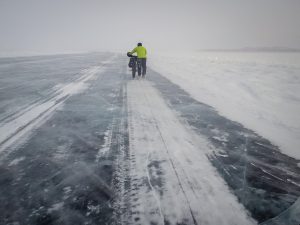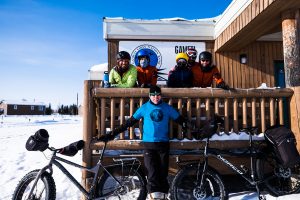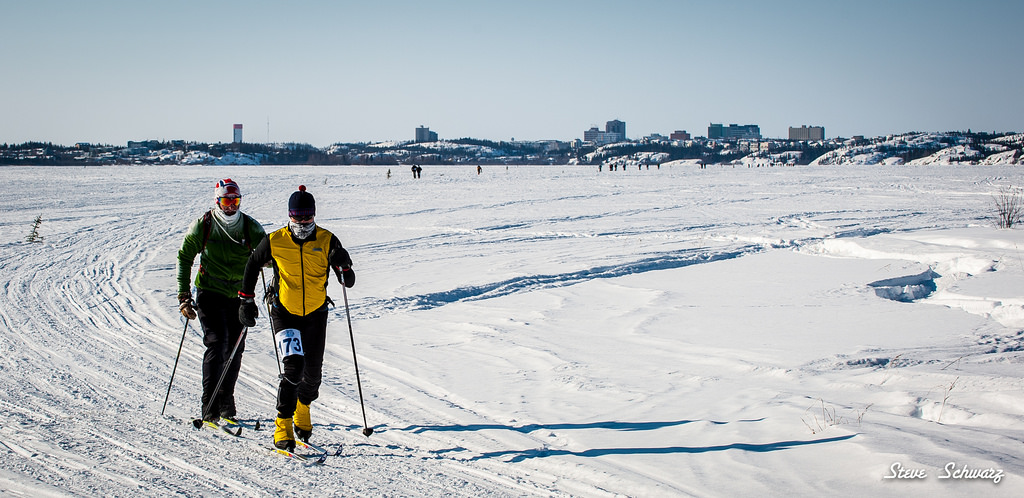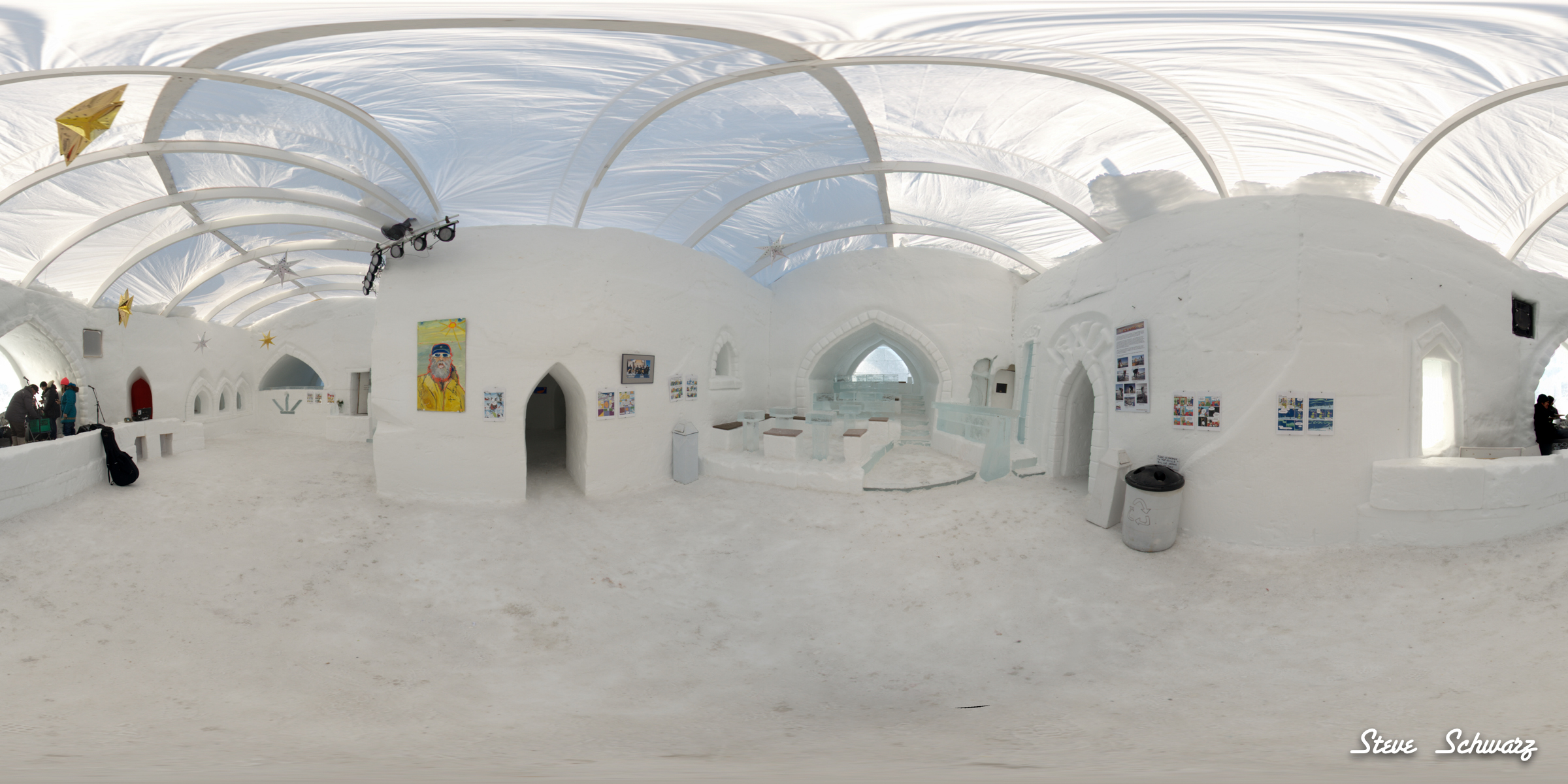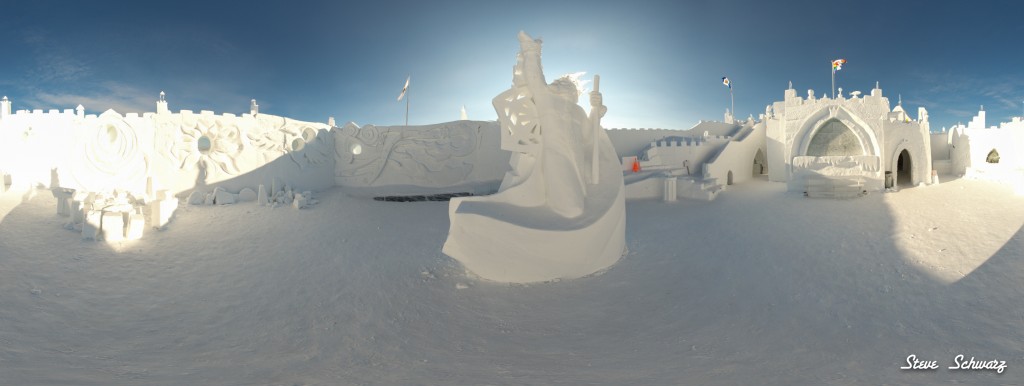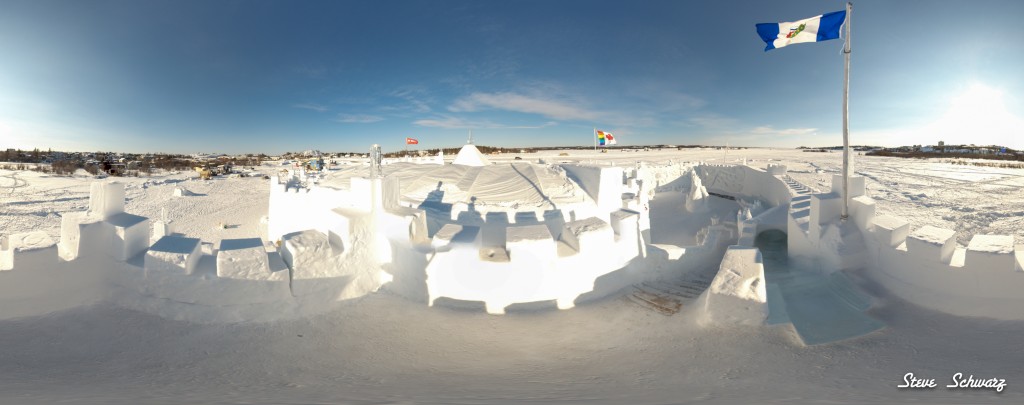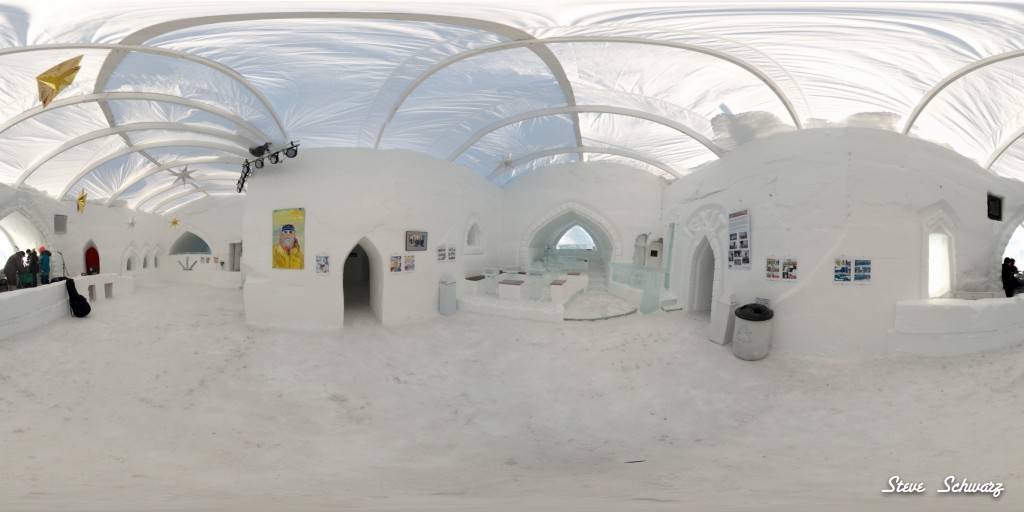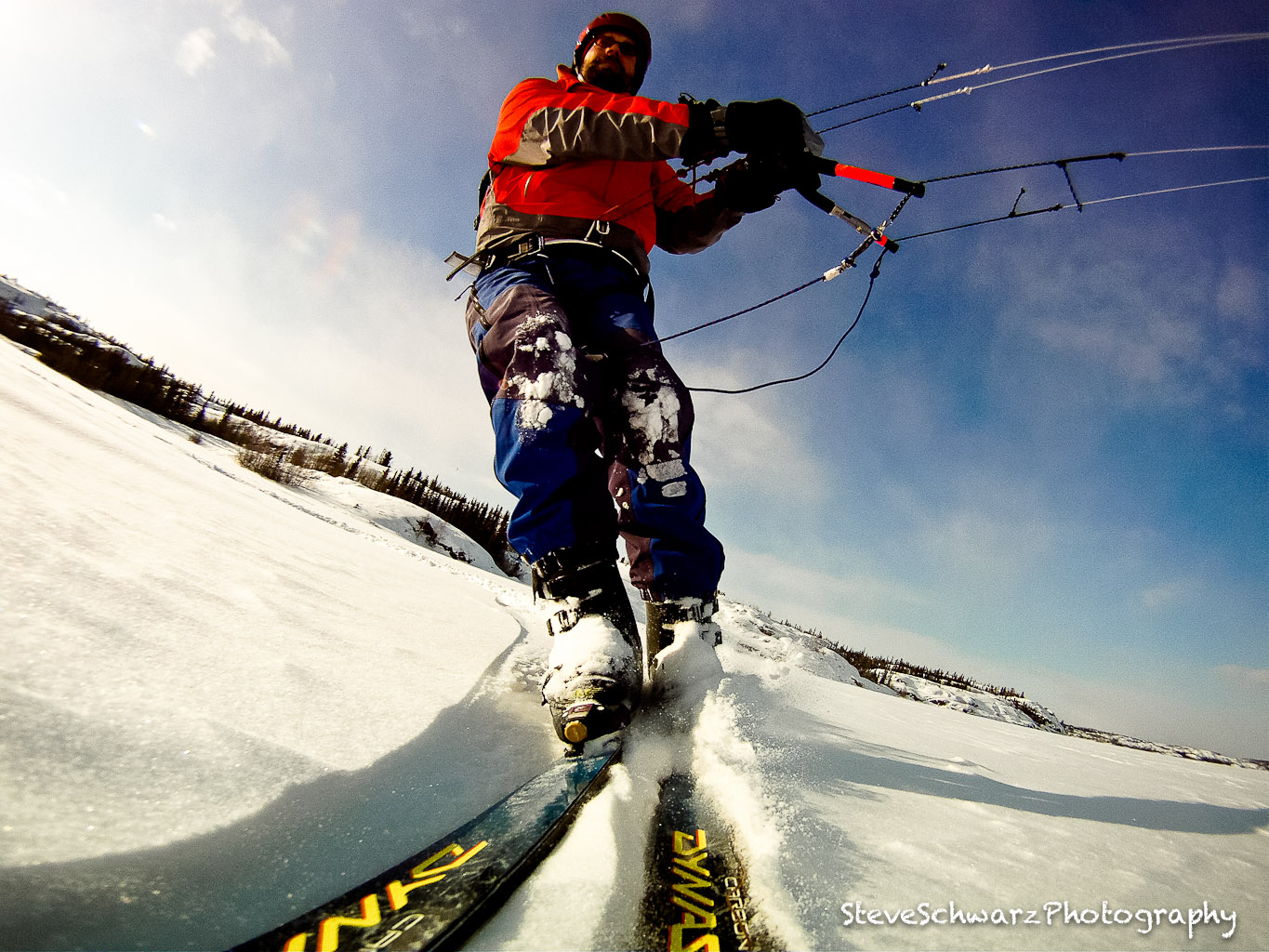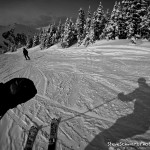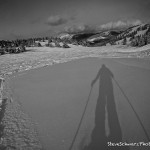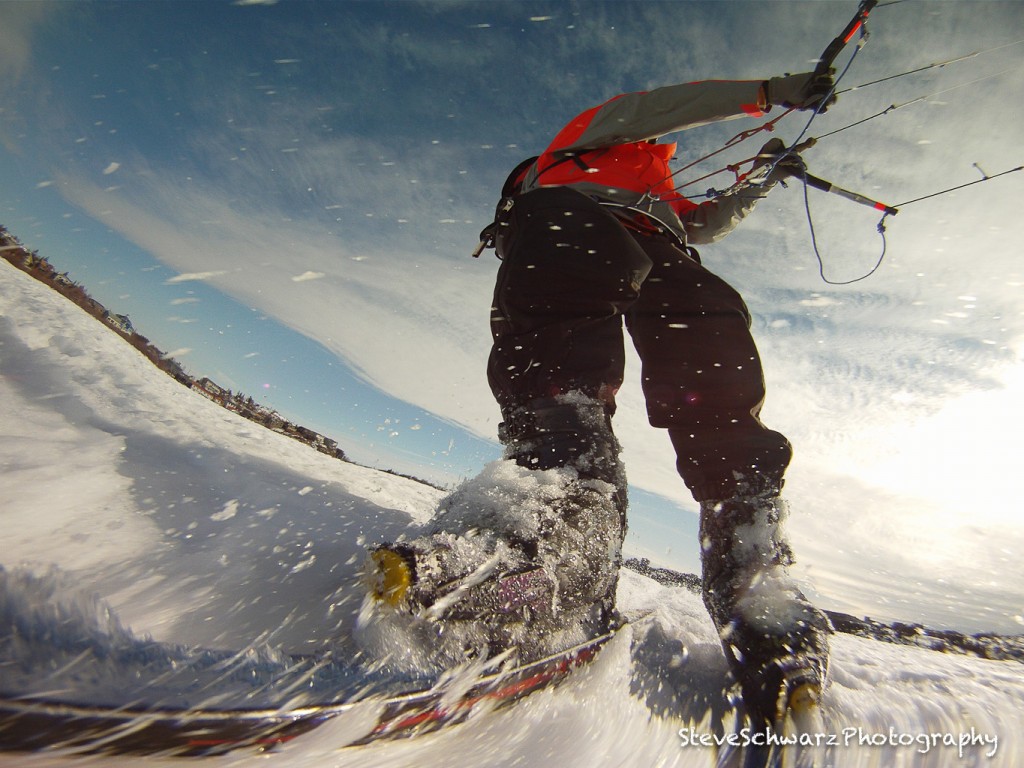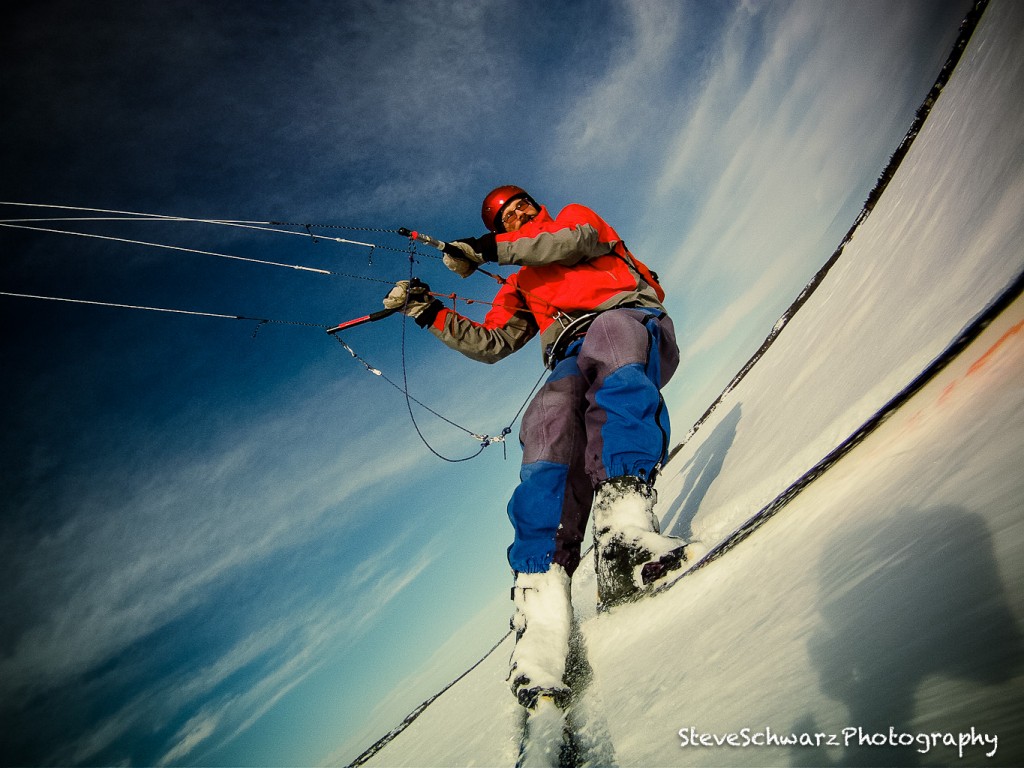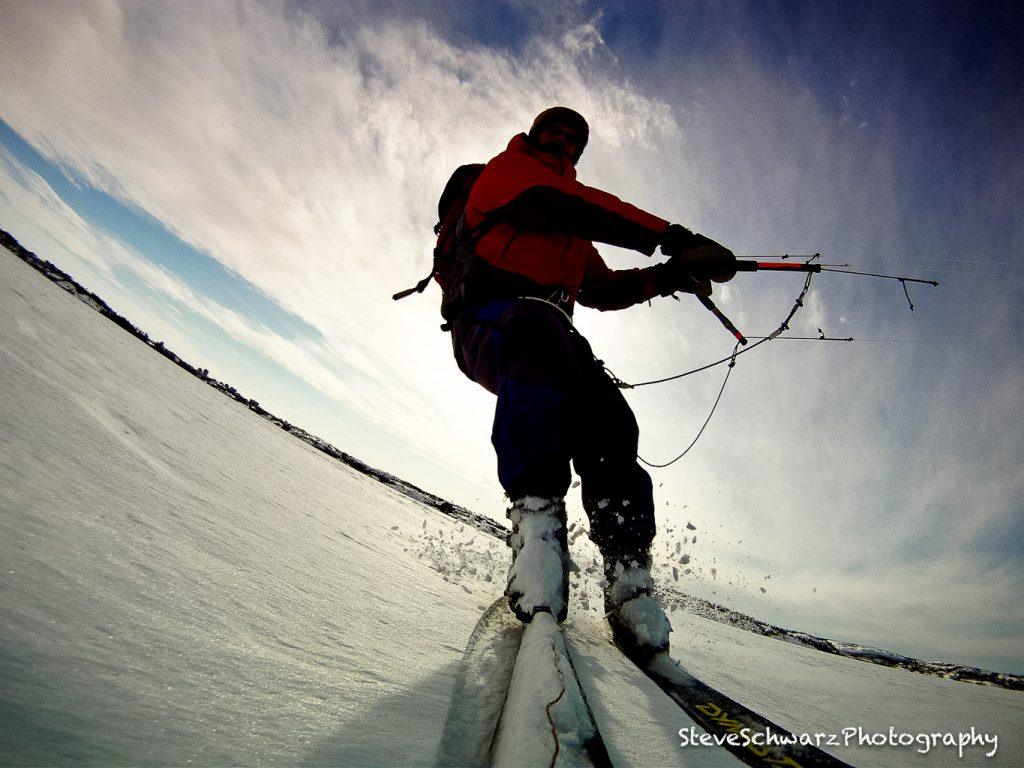Two years ago. March 2018 –
With the trucks loaded with bikes, food, camping gear, food and extra clothes, we began the one hour drive to Bechoko. A three day, 194km fatbike adventure on winter roads begins.
Roll ahead two days, Sarah Lake, March 24, 2018.
The ice on the lake is the most beautiful ice – crystal clear and smoother than most hockey arenas. We are on bikes, on a 25km long lake and heading straight into a 30 to 40km headwind. At times it seems that pushing the bike is less work than trying to peddle.
I’ve got frostbite on my nose and ears, my body aches from pedaling and my brain is fatigued from concentrating on keeping my bike upright.
Fortunately, this was the last day – The previous two days were much more …pleasant…
In November 2017 we gathered for the first planning session. Ewan had completed a similar bike trip along the Mackenzie Highways a year earlier – the rest of us – winter bike packing beginners. The maps were unrolled on the kitchen table showing the different winter road options, over portages and frozen lakes. We settled on the Bechoko to Gameti route, a total of 194 kilometers. With climate change, ice roads are slowly becoming a thing of the past; more and more are being replaced by all-weather roads. From then on Bob, Amanda and I started depleting our bank accounts to buy winter camping gear including new -40C sleeping bags, winter tents and sleeping mats.
During the spring we had a couple of practice camping trips and rides with fully loaded bikes. All this gear – how are we going to pack it all on our bikes ?. As time grew closer we decided to have a support/safety vehicle for safety, and for the convenience of being able to bring EVERYTHING needed for any conditions the weather may throw our way. One week before the scheduled departure we were joined by Damian and Bev. By coincidence, they had also selected the same trip on the very same weekend, however at the last minute their logistics support was not available, so now there were six of us.
We had planned for pit stops every 20km, with whom ever was driving in the support vehicle setting up a stove for hot soup or tea. With clear skies, no wind and relatively warm conditions we made good progress.
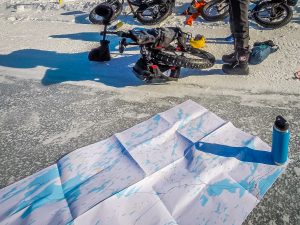
Pit stop on Marion Lake. Maps laid out to track our progress and best understand the length of the journey.
It took several hours to bike the length of Marion Lake, then over smaller lakes and portages. After obligatory photos at the 50km highway sign to mark my 50th birthday – How better to celebrate that occasion. Our pace was surprisingly fast, and by the time we stopped for the night we had biked 68Km.
Day two started with pushing our bikes a few kilometers to get out bodies and muscles warmed up for a day of biking. As we rode, lakes and portages passed by. Each of the bikers traveling at their own speed; ride fast enough to keep warm and slow enough to not break a sweat (sweating can cause hypothermia). Surprisingly, even in -70C rated boots feet still got cold.
We traveled over all kinds of road conditions, hard packed snow, bare ice on lakes and portages (the portages are actually flooded to make them last longer as the days get warmer) and rough overflow. With the exception of the odd vehicle – and very curious drivers – no doubt wondering what the heck we were doing, and why we would even think of bicycling this road. Wildlife was also scarce, except for the moose carcass and a wolverine that followed one of the riders for a while.
Towards the end of the second day, Damien and I were at the back of the group. My rear tire was loosing pressure, and we dreaded the thought of changing a fat bike tire in the middle of a windswept lake. Luck prevailed, and we were able to cycle into camp.
Earlier, Amanda, driving the support vehicle had selected a perfect location to set up camp on Mazenod Lake, and had even donned snowshoes to pack a trail and compact the snow to make setting up the tents so much easier. That evening, as we huddled around our camp stoves, comparing the calorie values of our respective boil-in-the bag meals, and tasting Ewan’s homemade hot water disolvable ‘pucks’ – to me they tasted like hand soap.
On day 3 light crept through our tents around 7, we woke to the sounds of frosted tent zippers and gas stoves and the aroma of fresh coffee. Amanda had selected a perfect camping spot – lots of morning sun and sheltered from the light wind. Conversation during the morning was centered on how amazing the weather had been, and the relatively few bike crashes. Bob had decided to ride in the support vehicle as his knee was still sore from a crash early on day one. This solved the need to fix my flat tire, as I could use Bob’s bike for the day.
As the hours went by we started to encounter stronger wind. The stronger gusts wanted to push us backwards, or at least cause our bikes to want to veer into the smooth polished, and super slippery bare ice. At times, despite our best efforts, we were slowed to a crawl and even began walking and pushing our bikes. The wind continued to get stronger and stronger, and our route was directly into the wind. More and more smooth bare ice appeared, the wind blowing away the packed snow that we needed for traction for our tires, and boots when pushing. My speed was anywhere from two to five miles an hour.
Blowing snow collected on the leeward side of the snowbanks – saving a narrow strip of suitable riding track. With each gust, the fine crystalline snow swirled around the trail, blowing past me and over the polished glass surface of the exposed sea ice, in hypnotic patterns.
This was probably the most beautiful ice that I’d ever seen; crystal clear, completely smooth. A speed skaters dream – a bikers nightmare !. At times, the smooth ice surface combined with the high winds made riding virtually impossible.
In front of me somewhere was Ewan, Bev and the truck..
“What the F*** am I doing here – this is worse than Planet Hoth”(Star Wars reference). I had unceremoniously dropped the bike into a snowbank and took a few pictures to record the experience. A few minutes later Damien had caught up and we silently pushed our bikes into the wind.
At 2pm we re-grouped at the north end of Sarah Lake. Our progress has slowed to a crawl. Energy reserves had plummeted. We had biked 150km – only about 40km to Gameti. From here on – a short portage then a nearly 40km crossing on Faber Lake to Gameti.
It was Decision time. We had three choices:
Camp here
Continue,
Bail
Occasionally there comes a point in an adventure where circumstances force you to make a decision that will ultimately determine the outcome of the trip. Halfway through day three we had such a decision to make.
I have already reached deep into my energy reserves. On a calm day, I could have eaten a few power bars and pushed on. 40 km wasn’t that far – under normal circumstances. But this was a 30 to 40km/hr head wind. With the decision made to bail, I packed my gear into the truck for the drive to Gameti. Bitter sweet – I’d have preferred to have continued. Two hours later, the truck returned to check in on Damian and Bev. They had covered 25km. Bev’s words were –
”You didn’t miss a F*ing thing”
Ewan – cycled in a few hours later. Frostbitten and completely Spent. He had biked the whole length 190km. That evening, after hot showers we celebrated with a bottle of scotch and had a potluck of sorts finishing off our remaining camping food.
The next morning after waking up in warm beds, we had a leisurely bike tour around Gameti and packed up our gear in preparation for the drive home. Shana and Maggie had driven from Yellowknife to drive us back to our vehicles in Bechoko. They had been delayed as the road we had biked on the previous day had been closed due to snowdrifts. They had brought beer, fresh fruit and snacks for the drive home. By 9:30pm we had transferred gear and bikes to the other vehicles and were heading back to Yellowknife. Two hours later (total distance of 100km) we were home – Yes – Exhausted and happy.
One of the most memorable moments of the trip, which really touched my heart, was the birthday cake on Day One. In the middle of nowhere and a few close friends. The least enjoyable was biking on Sarah Lake. I remember my thoughts as I took that picture
With frostbite on my nose and ears, my body ached from pedalling and my brain is fatigued from concentrating on keeping my bike upright.
Fortunately, this was the last day – The previous two days were much more …pleasant…
Thanks to Barren Ground Coffee for their sponsorship !
Footnote: Our planned bike ride in 2019, Bechoko to Whati was cancelled due to a sudden warming and the ice road was closed.
March 2020 – Our last opportunity to bike the Bechoko – Whati ice road as construction has already started on a all-season road. The end of the ice roads is near. Trip planned and ready to go.
